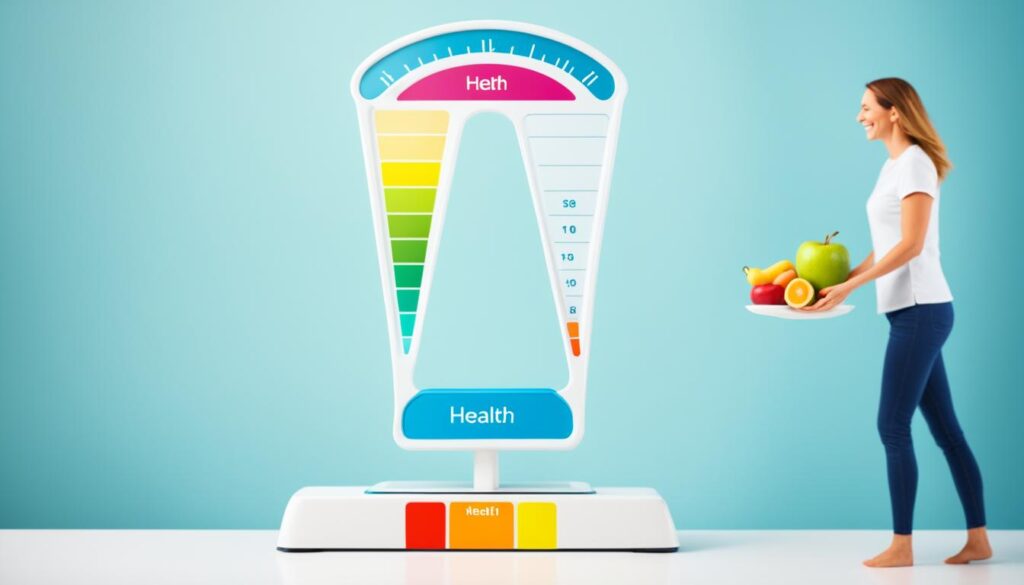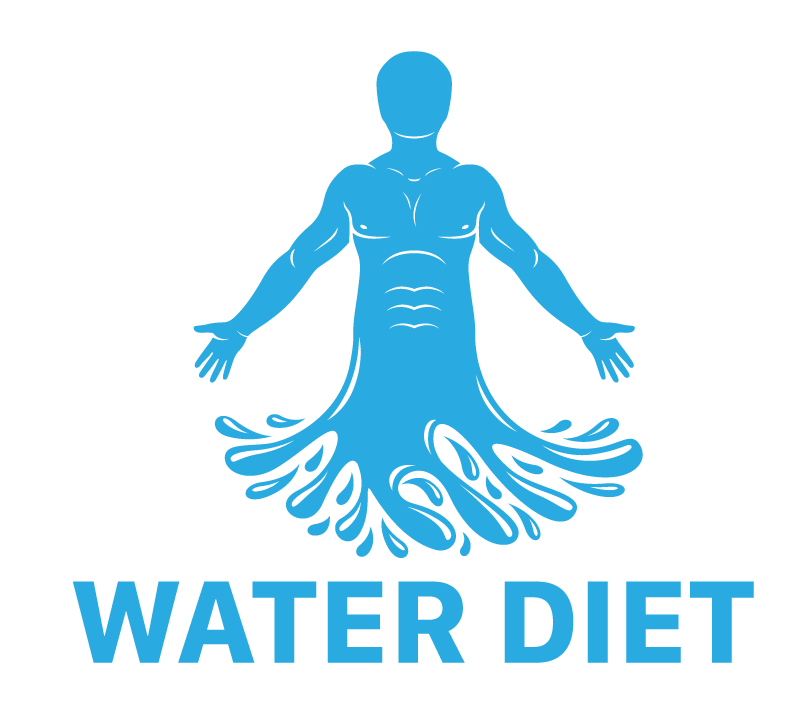The journey towards improving health through fasting comes with a critical final step: learning how to safely break a water fast. For many seeking the benefits of this practice, a water fast typically lasts anywhere from 24 to 72 hours, and as the conclusion approaches, a careful transition from water fast back to nourishment is key to maintaining health post-water fast. This process involves more than just satisfying hunger; it’s about nurturing the body and minimizing any potential stress on your system.
To ensure a safe and comfortable return to regular eating, it’s advised to begin with smaller meals, allowing the body to adjust without overwhelming it. This methodical reintroduction of food helps guard against the discomfort of refeeding syndrome, a serious condition brought on by sudden shifts in fluid and electrolyte balance after a period of fasting.
Key Takeaways
- Break your water fast safely by transitioning with small meals.
- Maintain health post-water fast by gradually reintroducing nutrients.
- Avoid large meals immediately after fasting to prevent refeeding syndrome.
- Plan the transition from fasting to normal diet over the course of 1–3 days.
- Ensure a successful break by carefully monitoring the body’s response.
- Seek medical advice before fasting if you have specific health conditions.
The Importance of Strategically Ending Your Water Fast
Those who seek to maximize the benefits of water fasting often pay great attention to the protocols of initiating and maintaining the fast. Equally crucial, yet sometimes overlooked, is the practice of breaking a water fast. A thoughtful approach to this crucial phase not only safeguards against potential risks but also amplifies the rewards of your fasting efforts.
The final chapter of a water fasting experience involves reintroducing your body to the nourishment it has abstained from. This requires more than merely ending your abstinence; it involves orchestrating a reintroduction strategy that is gentle on the digestive system and respectful of your body’s recalibrated state. An abrupt return to regular eating can shock the system, engendering symptoms such as nausea, fatigue, and other facets of refeeding syndrome. A meticulously planned water fasting protocol for breaking the fast can mitigate these effects and restore equilibrium to fluid and electrolyte balances.
The careful selection of foods, the pacing of their reintroduction, and the portion sizing all play pivotal roles in the transition process. Choosing nutrient-dense, easily digestible foods and avoiding a sudden return to high-calorie, processed options can make a significant difference in maintaining the hard-earned results of your fast. Here’s a guide on how to navigate this critical juncture:
- Begin with liquid nutrients that offer a soothing effect on the gastrointestinal tract.
- Progress to soft, easy-to-digest foods that are low in sugars and rich in nutrients.
- Listen to your body’s cues and remain attentive to any signs of distress.
- Moderation is key—start small and increase portion sizes gradually over several days.
The first meal post-fast should be more of a whisper than a shout, signaling your digestive system to awaken gently from its period of rest.
| Phase | Food Type | Portion Size | Frequency |
|---|---|---|---|
| Initial | Liquid nutrients (broth, juices) | Small | Every 2-3 hours |
| Progression | Soft, easily digestible foods (ripe fruits, steamed vegetables) | Moderate | Every 3-4 hours |
| Consolidation | Regular diet, lower in fats and complex carbs | Regular | Thrice a day |
Breaking a water fast requires patience and mindfulness. The process is not a race to the dietary finish line but rather a nurturing passage back to a state of balance and sustenance. The adage ‘slow and steady wins the race’ holds true, ensuring the body’s successful adaptation to a regular diet and the sustaining of fasting benefits.
As the fasting period concludes, consider the journey taken and the intentions behind the fast. The breaking of the fast should honor the discipline you have shown and carry forward the mindfulness about consumption that fasting often instills.
To conclude, the process of breaking a water fast is an integral aspect of the fasting experience. It should be undertaken with a deep understanding of one’s personal health, the body’s needs, and the ultimate goals of the fasting practice. A successful transition strikes a balance between the science of nutrition and the art of self-care.
Understanding the Water Fasting Process and Its Impact
Embarking on a water fasting journey offers a pathway to numerous water fasting benefits, including potential improvements in longevity and chronic disease management. With a surge in popularity, understanding water fasting becomes critical to reaping these rewards while mitigating risks. While fasting is an ancient practice, modern science now illuminates its effects on cellular regeneration and fasting-related biological processes such as autophagy.
The Role of Autophagy in Water Fasting
Central to the healing mechanisms activated by water fasting is autophagy and fasting. Autophagy acts as an internal cleanup crew, systematically deconstructing and recycling cellular debris. This biological marvel is not just about decluttering at a microscopic level; it’s about giving rise to a healthier cellular environment, which may contribute to longevity and vitality. During water fasting, autophagy begins to peak between days three and five, making these days incredibly significant for those seeking the full spectrum of water fasting clarity and health benefits.
Common Misconceptions About Water Fasting
Despite the recognized advantages, many are deterred by myths about water fasting. It is commonly misconceived, for instance, that one cannot become dehydrated since water is the sole intake; however, a substantial amount of daily hydration comes from food sources, making dehydration a real concern during extended periods of fasting. Others misunderstand the side effects, like orthostatic hypotension—dizziness upon standing that may occur due to changes in blood pressure. Clearing up these misconceptions and enhancing understanding water fasting with accurate, evidence-based information is essential to safe practice and ensures that individuals can distinguish between the myths and the tangible benefits of fasting-related cellular regeneration.
To dispel these misconceptions, let’s consider an illustrative scenario: Upon standing quickly after a prolonged period without food, an individual may feel lightheaded—a symptom of orthostatic hypotension, which can be mitigated with proper guidance and preparation. Knowledge about these occurrences provides both clarity and comfort to those engaging in water fasting, reinforcing the importance of proceeding with an informed and cautious approach.
- Understanding dehydration risks despite ample water intake
- Expecting and mitigating temporary side effects such as dizziness and headaches
- Educating oneself about the true nature of physiological changes during fasting
In summary, water fasting embodies a powerful merger of tradition and science with its demonstrated influence on autophagy and potential for disease prevention. By clearing up myths and understanding the authentic implications of water fasting, we allow ourselves to engage with this health practice from a place of informed decision-making and respect for our bodies’ complex needs.
How to Safely Break a Water Fast
When you conclude a period of water fasting, it’s not just about ending the fast; it’s about the strategic reintroduction of food to your body. The transition away from a state of fasting requires a tactical approach that ensures your body is replenished without disruption.
Breaking fast with gentle foods is the cornerstone of this approach. The objective is to awaken the digestive system without overburdening it, allowing it to ease back into the regular processing of food. This process starts with select foods that are easy to digest and continues with a careful adjustment of meal intake.

Introducing Gentle Foods Post-Fast
As you begin easing back into eating, the emphasis should be on foods that are soothing and stomach-friendly. During this time, your body’s response to breaking the fast is best supported by foods that are rich in electrolytes and low in carbohydrates. Consider options like nourishing bone broth, steamed leafy vegetables, and ripe bananas to provide the necessary nutrients without overwhelming your digestive tract.
Monitoring Your Body’s Reaction to Breaking the Fast
Listening to your body post-fast is critical. Every individual’s response to refeeding can vary greatly, and it’s important to be vigilant for any signs of discomfort or digestive issues. Begin with very small portions, and progressively increase them, adapting your meal plans post-water fasting according to how your body reacts.
Adjusting Portion Sizes and Meal Frequency
After a water fast, you may need to manage portion size post-fast more actively. The stomach typically shrinks during a fasting period, necessitating smaller meals that are more frequent initially. As your body becomes accustomed to food again, you can gradually increase the portion sizes and extend the time between meals, finding a new rhythm in your meal timing after fasting.
| Timeframe Post-Fast | Type of Food | Portion Size | Comments |
|---|---|---|---|
| Immediately after | Liquid nourishment (e.g., bone broth) | Small sips | Rich in electrolytes, easy on digestion |
| 2-4 hours post-fast | Soft solids (e.g., steamed vegetables) | Small portions | Begin to introduce soft foods gradually |
| Day 2 and onward | Regular foods (emphasis on cooked veggies, lean proteins) | Moderate, slowly increasing | Adapt based on individual digestive comfort and appetite |
Potential Health Benefits and Risks of Water Fasting
Fasting for health improvement can lead to a variety of outcomes that one must consider before taking part in such a restrictive dietary endeavor like water fasting. While there are several water fasting health benefits, it is imperative to balance these with the understanding of the risks of water fasting.
One of the most prominent motivators behind water fasting is the potential for weight loss. The absence of caloric intake forces the body to utilize stored fats for energy, which can result in a decrease in body weight. Beyond weight loss, those who undergo water fasting may also experience improvements in blood pressure and cholesterol levels, both of which are significant factors in heart health.
In addition to these aspects, there may be an increase in insulin and leptin sensitivity post-fast. Enhanced sensitivity to these hormones can aid in better blood sugar management and might provide satiety cues, respectively – both critical components in overall metabolic health.
Despite these favorable outcomes, those considering water fasting should be mindful of its inherent risks. Muscle loss can occur as the body seeks alternate protein sources in the absence of food.
Dehydration, counterintuitive as it may sound when consuming water exclusively, is another risk due to the absence of water typically obtained from food sources. Thus, it’s essential that individuals partaking in water fasting drink more than their usual daily water consumption.
Furthermore, individuals with certain medical conditions such as gout, diabetes, and eating disorders should especially heed caution or avoid water fasting altogether. In all cases, medical consultation and close monitoring during a fasting period are highly recommended to prevent adverse health repercussions.
| Health Benefits | Health Risks |
|---|---|
| Weight Loss | Muscle Loss |
| Improved Blood Pressure | Dehydration Risks |
| Better Cholesterol Levels | Aggravation of Medical Conditions |
| Increased Hormone Sensitivity | Requirement for Medical Monitoring |
To ensure a comprehensive understanding of both the perks and perils of water fasting, let’s delve deeper into each component:
- Autophagy: This beneficial process, which may help in clearing dysfunctional proteins and organelles from cells, is induced during fasting. However, ample scientific research to back long-term benefits in humans still requires development.
- Chronic Disease Prevention: Some studies suggest a lowered risk for chronic diseases as an advantage of fasting, yet these observations are not without the need for further evidence to conclusively tie fasting to long-term disease prevention.
- Refeeding Syndrome: This potentially fatal shift in fluids and electrolytes can occur if a fast is broken improperly, a risk that underscores the significance of a medically supervised plan post-fast.

In summary, while fasting for health improvement encompasses a range of positive outcomes, the journey is not without its hazards. Navigating these waters requires an earnest evaluation of pros and cons, alongside professional medical advice to engage in this practice safely and effectively.
Safe Practices for Transitioning Back to Regular Diet
Embarking on the journey of returning to a regular diet after a water fast is an intricate dance between safeguarding the body’s delicate post-fasting state and gradually welcoming back a diverse array of foods. Thoughtful strategies for rehydrating post-water fast and replenishing nutrients after fasting play a pivotal role in this transition, impacting not just physical wellbeing but also supporting the sustained benefits gained from the fast.
Hydration and Nutrient Replenishment Strategies
Proper hydration remains a cornerstone of wellness, particularly when shifting from a water fast back to regular meals. By rehydrating post-water fast, individuals can combat the often overlooked dehydration that comes from a lack of food-derived water content. As well as increasing water intake, integrating electrolyte supplements or naturally mineral-rich waters can restore balance and circumvent potential issues like dizziness or mental fog often associated with post-fasting dehydration.
Innovative Water Recipes for Detox and Refreshment
Infusing water with a twist of lemon, a handful of antioxidant-rich berries, or slices of cucumber contributes to not only rehydrating but also gently detoxing the body after a fast. Such refreshing infused water ideas are a pleasurable way to stimulate the senses while easing back into a regular dietary routine. Here are some creative hydration recipes to consider:
- Cucumber Mint Detox Water
- Berry Blast Infused Water
- Citrus Ginger Hydration Blend
Creating a Balanced Post-Fast Meal Plan for Optimal Health
Strategic meal planning after fasting requires a delicate approach to maintain the balance between satiety and digestive comfort. Gradual reintroduction of proteins, vegetables, and fats, while steering clear of high-fiber, complex carbohydrates initially, can help the digestive system adjust without distress. Overtime, meals should evolve to incorporate a spectrum of macronutrients, thus promoting healthy eating after fasting and supporting nutritional strategies post-water fast.
| Day Post-Fast | Food Choices | Meal Focus |
|---|---|---|
| Day 1 | Broths, cooked vegetables | Hydration and Gentle Fiber |
| Day 2 | Soft proteins, healthy fats | Protein Reintroduction |
| Day 3 | Whole grains, nuts, seeds | Complex Carbs and Oils |
The strategy of post-fast balanced meal planning is not just a means to an end but a renewal of one’s commitment to ongoing well-being and vitality. It is a moment to recalibrate, reassess, and reestablish a foundation for continuity in healthy eating and smart dietary transition strategies.
Conclusion
Concluding water fasting safely is an art that taps into the symphony of the body’s intricate signals and nutrition. The experience is as much about introspection and patience as it is about the physical process of reintroducing foods and maintaining well-being. Fasting practitioners would benefit from reflecting on their fasting experience, noting changes in energy levels, mental clarity, and overall vitality. These personal fasting insights pave the way for not only a singular journey of health but for communal wisdom that can guide and support others.
A mindful approach to breaking a fast, focusing attentively on the body’s cues and gradual reintroduction of nourishment, supports the profound work accomplished during the fast. Each sip and morsel post-fast is an opportunity to honor the body’s transformation and the discipline invested in the fasting practice. Thus, those who honor the journey of their fast with a gentle and considerate conclusion often find the benefits to be more significant and enduring.
In the broader context, sharing these experiences can be invaluable. They contribute to a collective knowledge base rooted in real-world practices, leading to a better understanding of water fasting’s diverse effects. As fasting individuals share their trajectories—from their motivations and challenges to their triumphant moments and insights gained—others find inspiration and camaraderie in these stories of transformation. Together, such reflections enrich the narrative on how we approach health, self-care, and the profound act of fasting.




